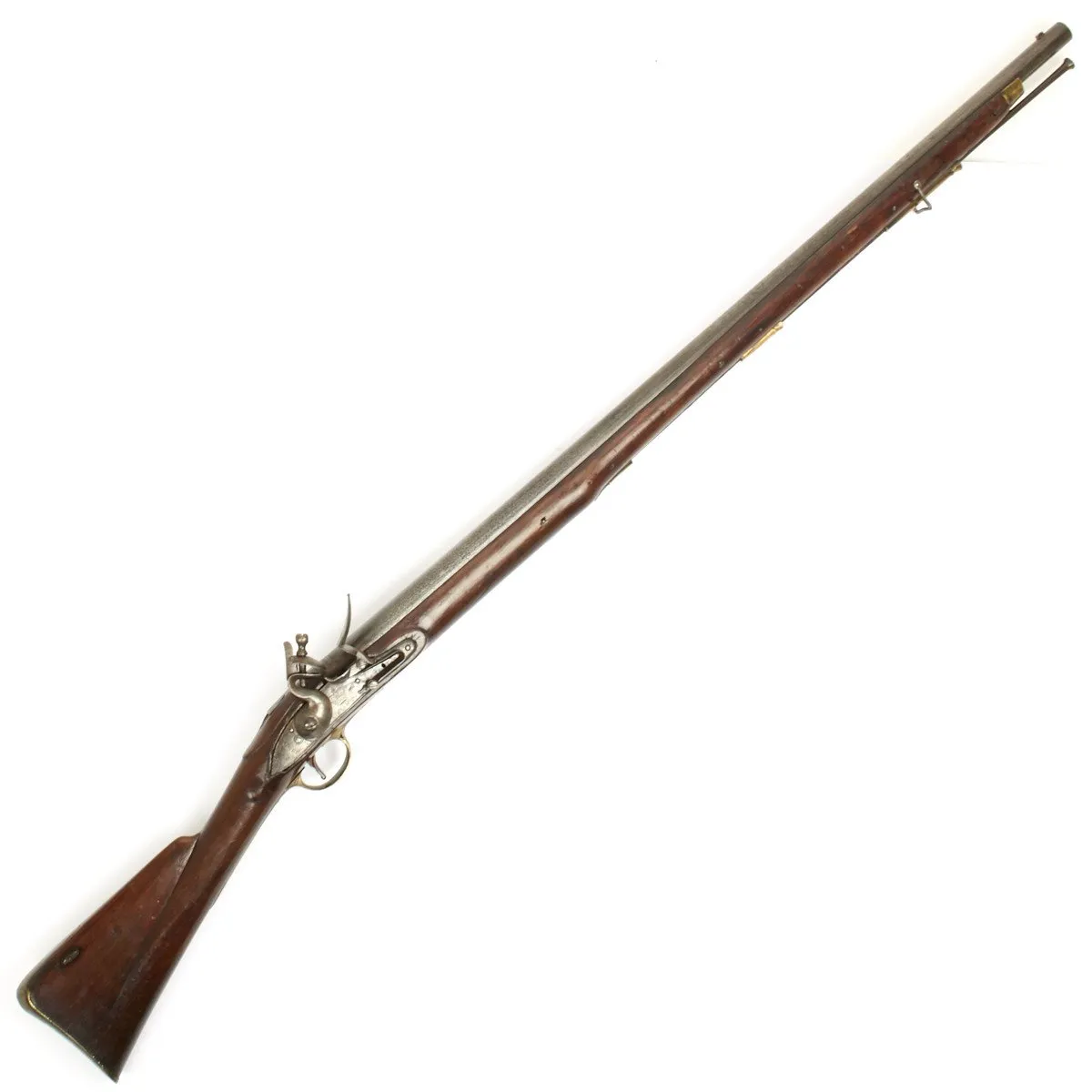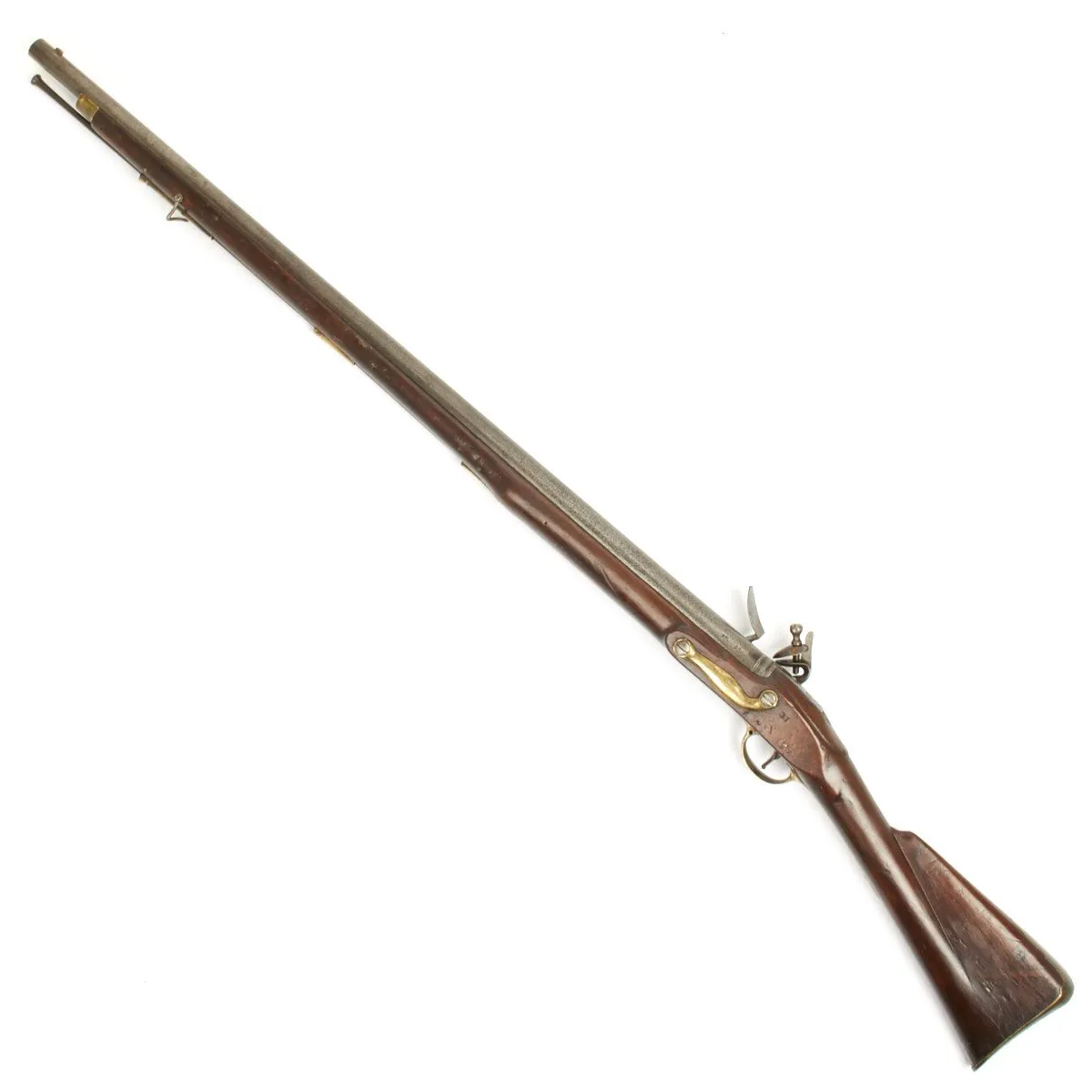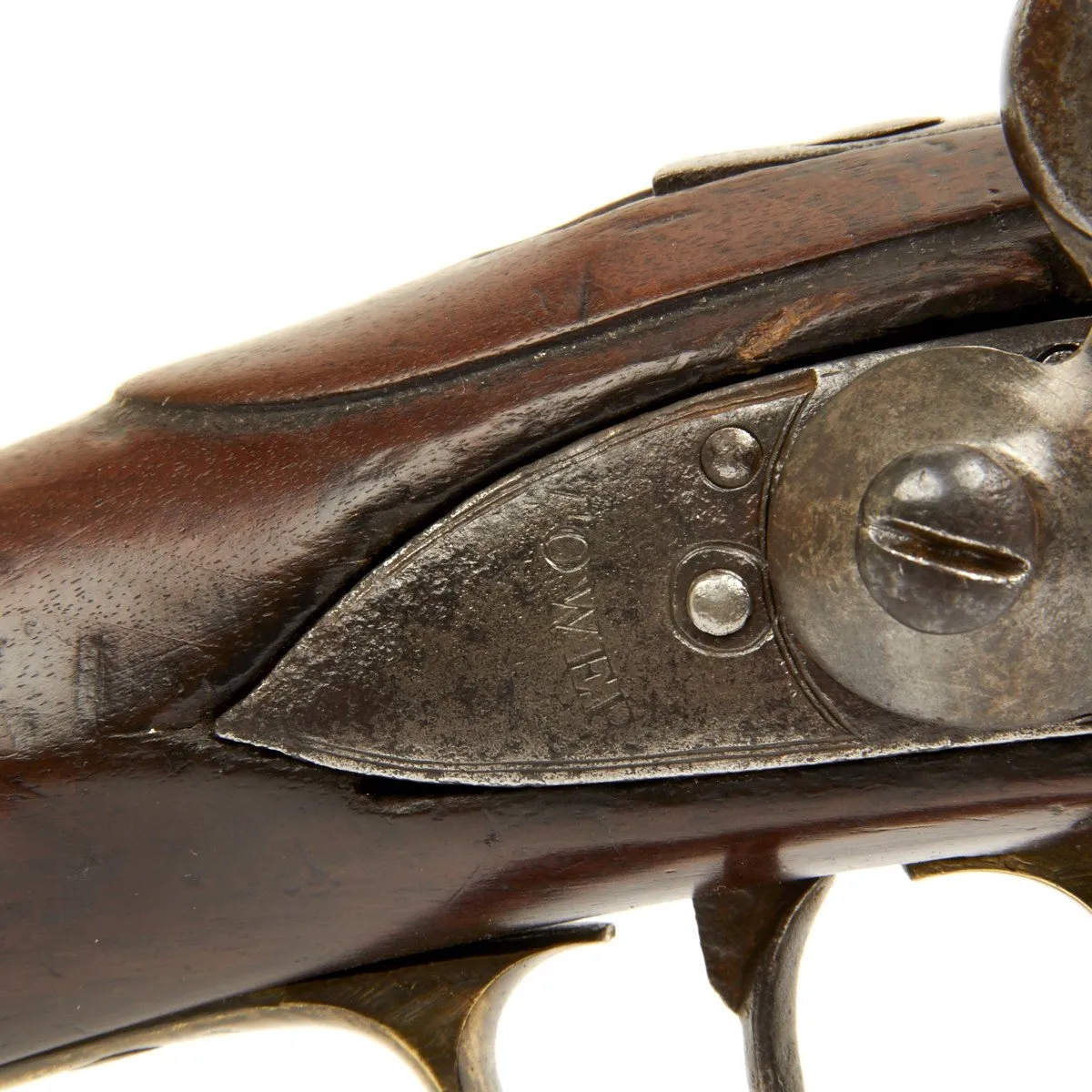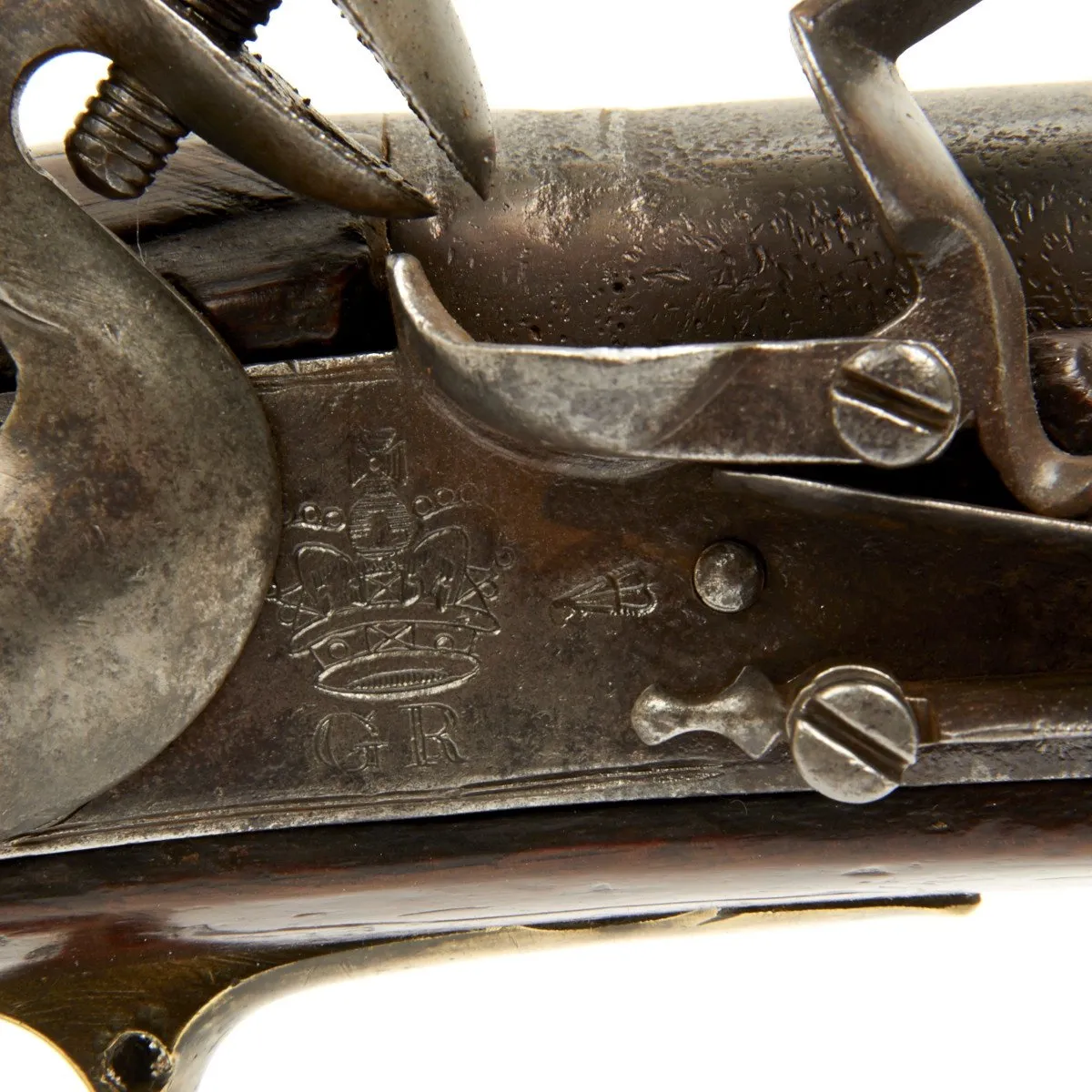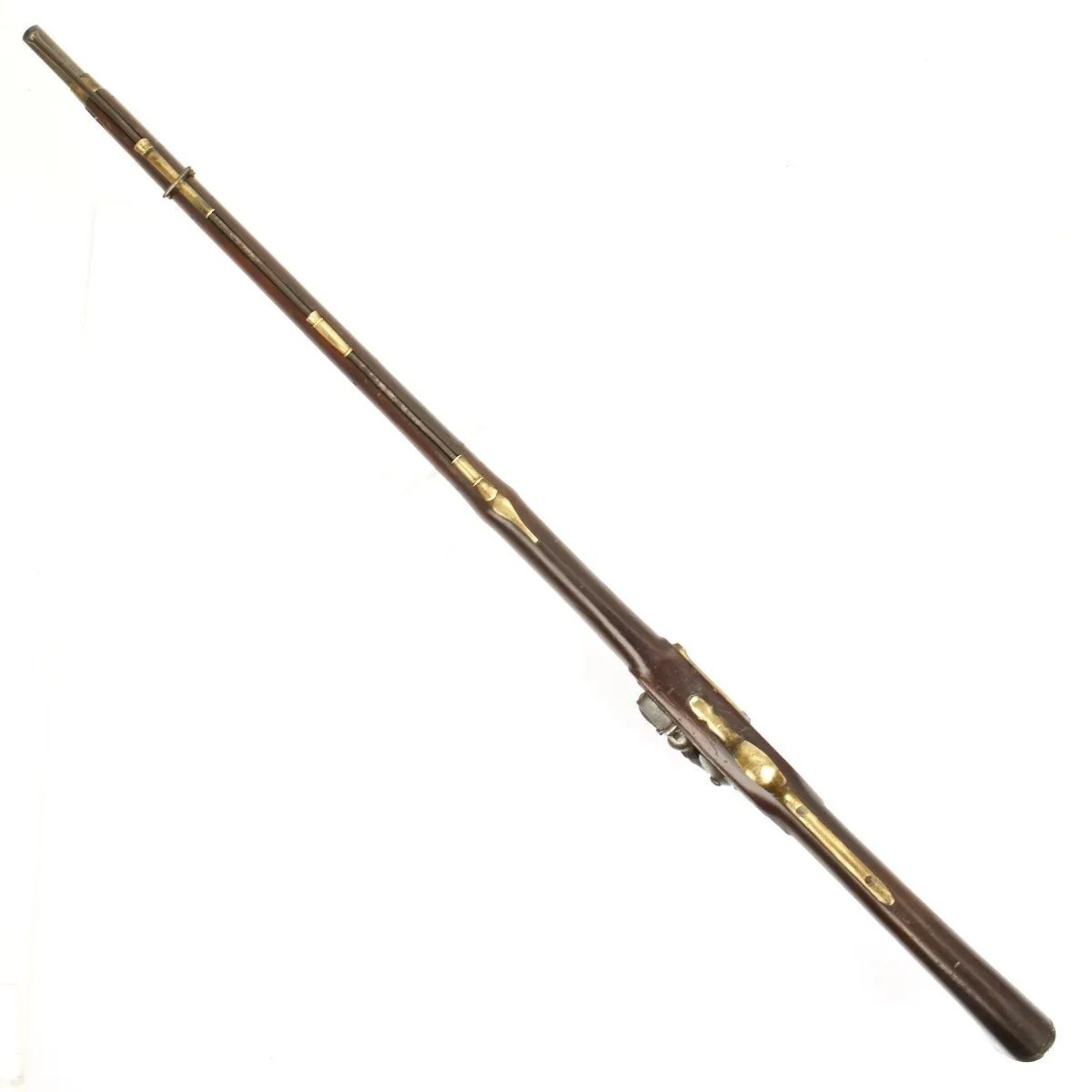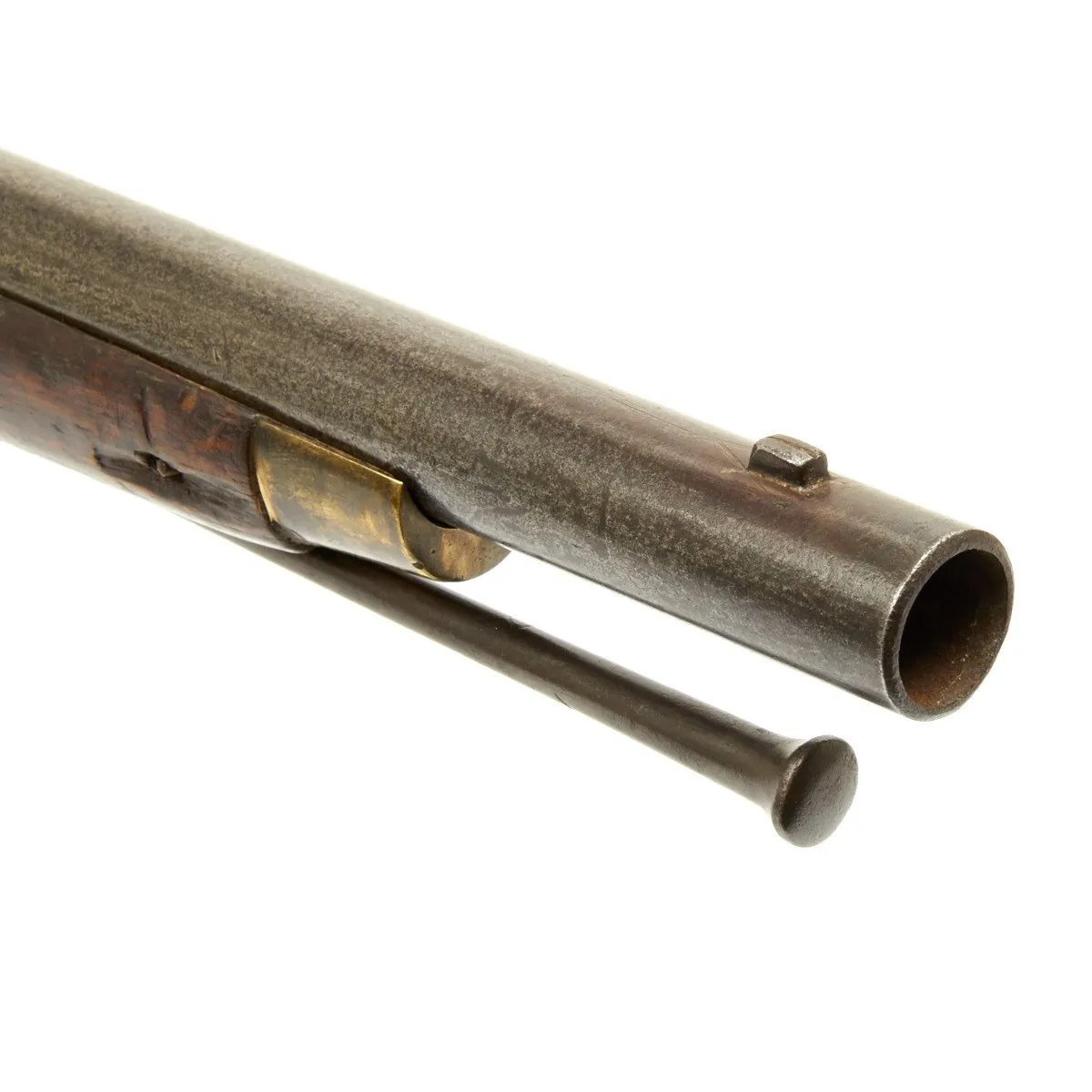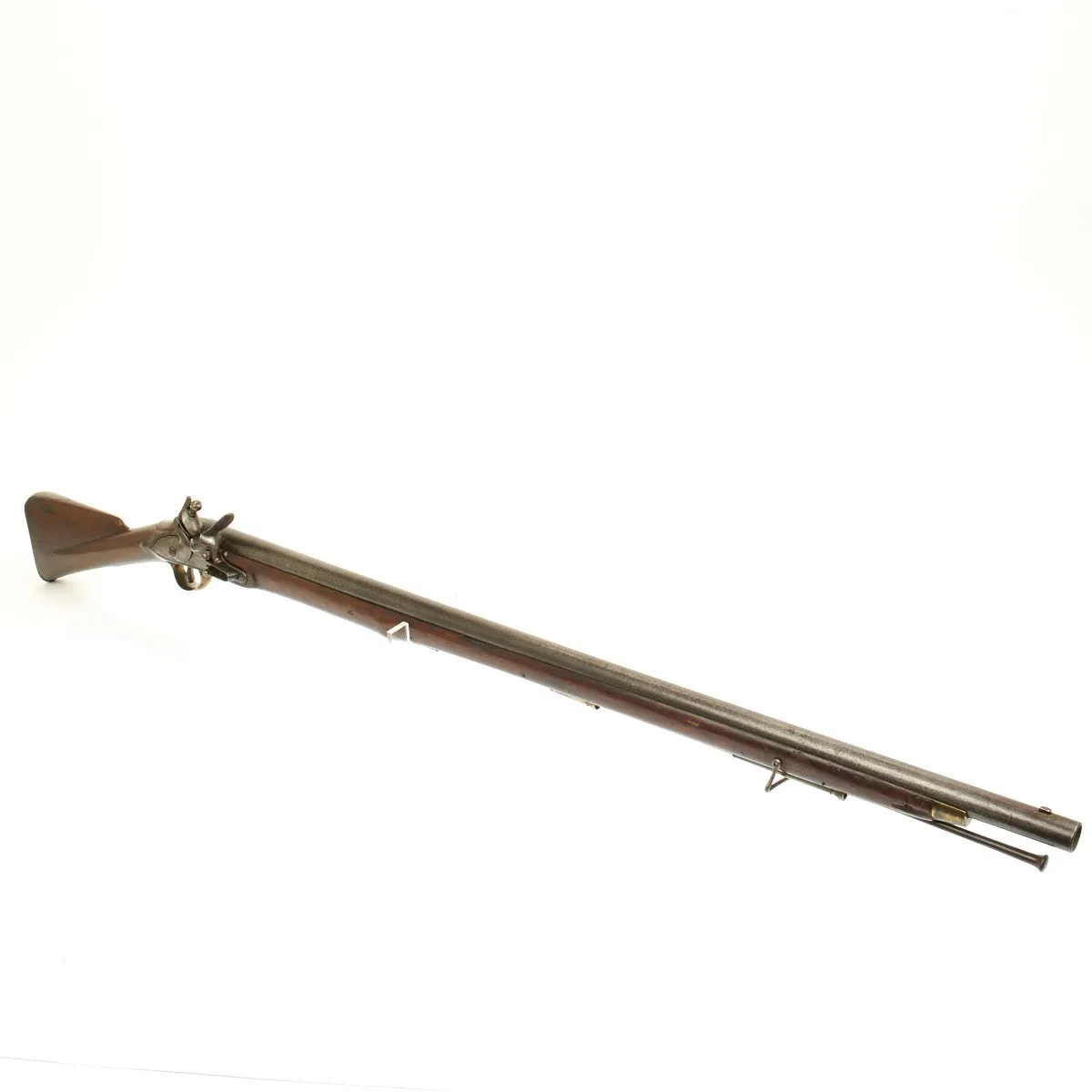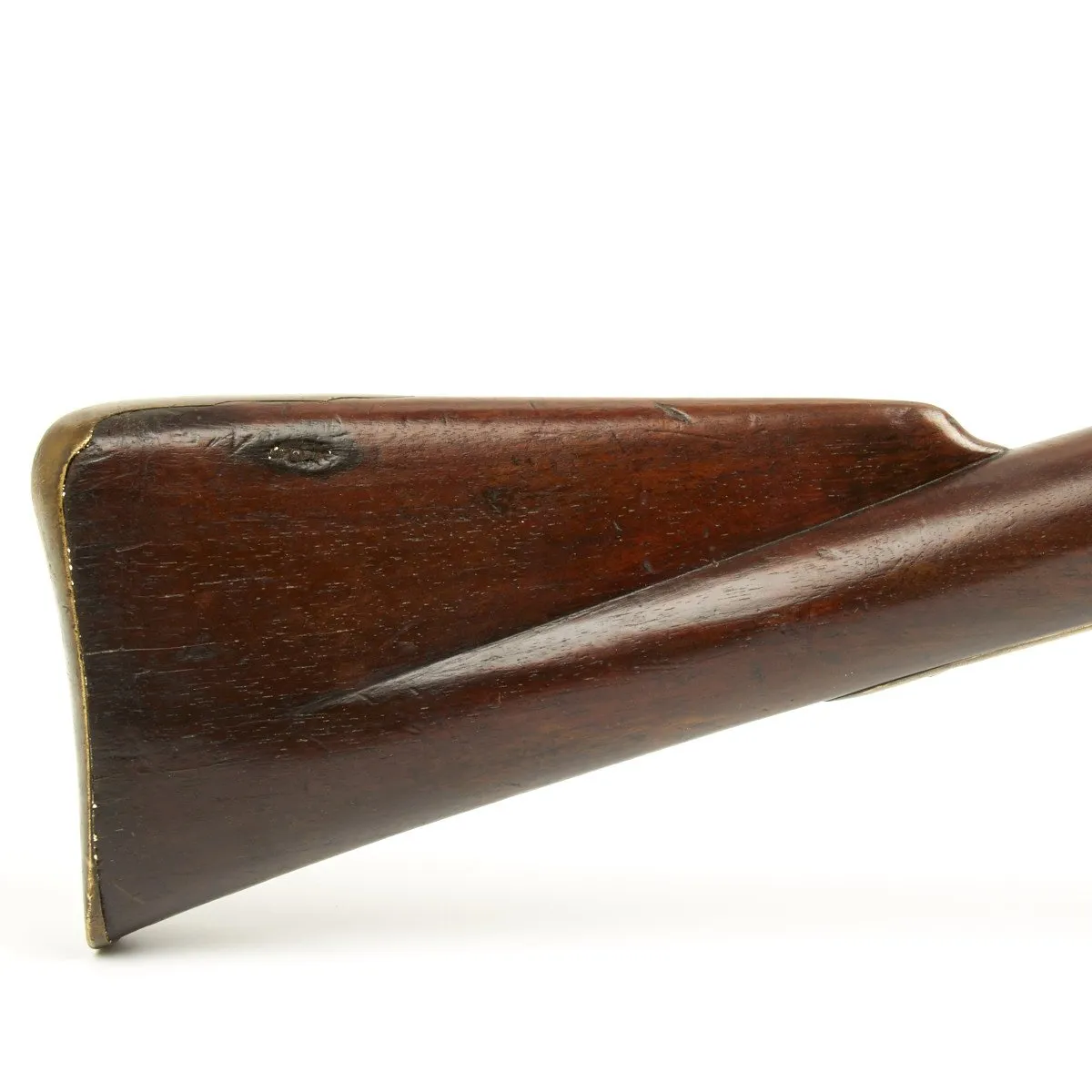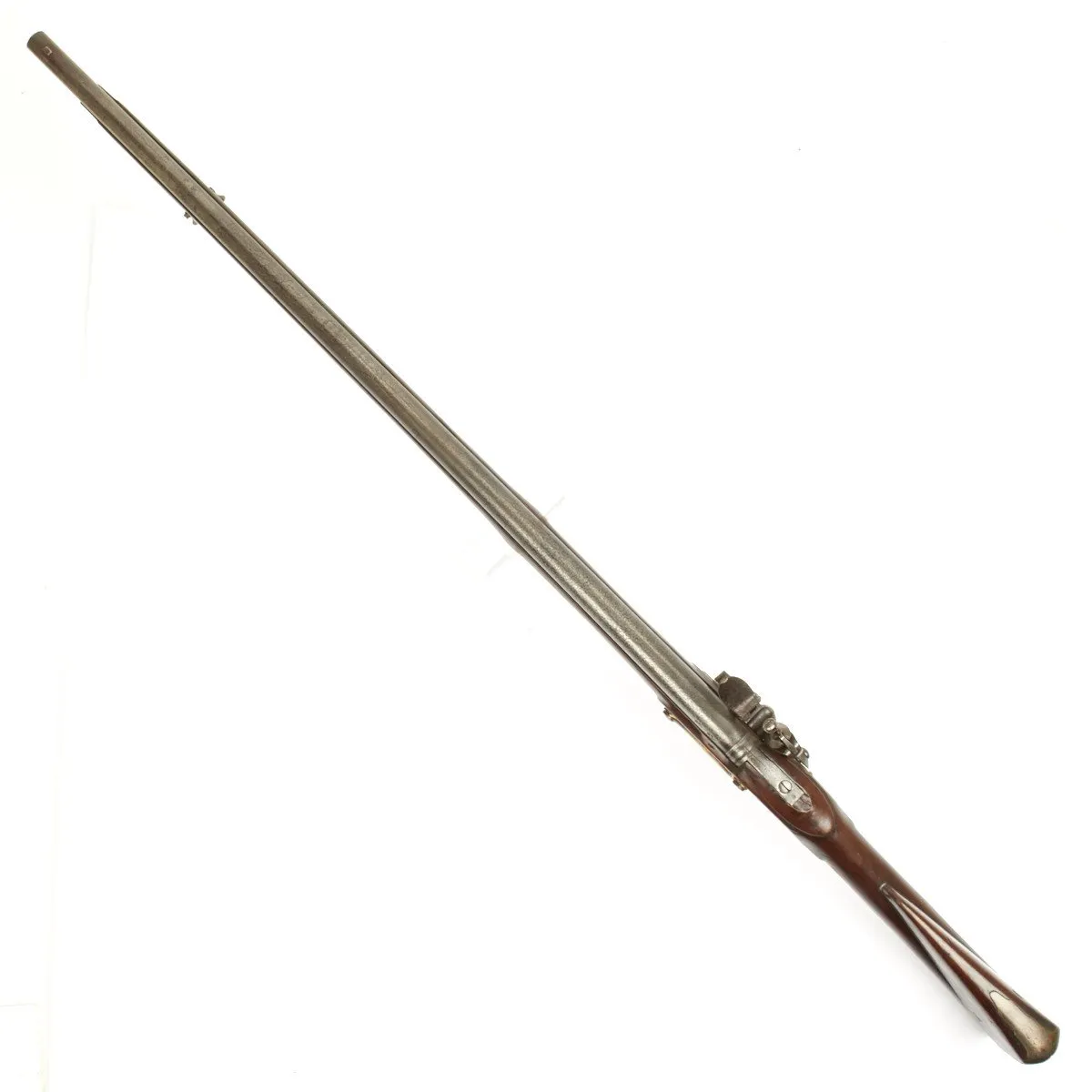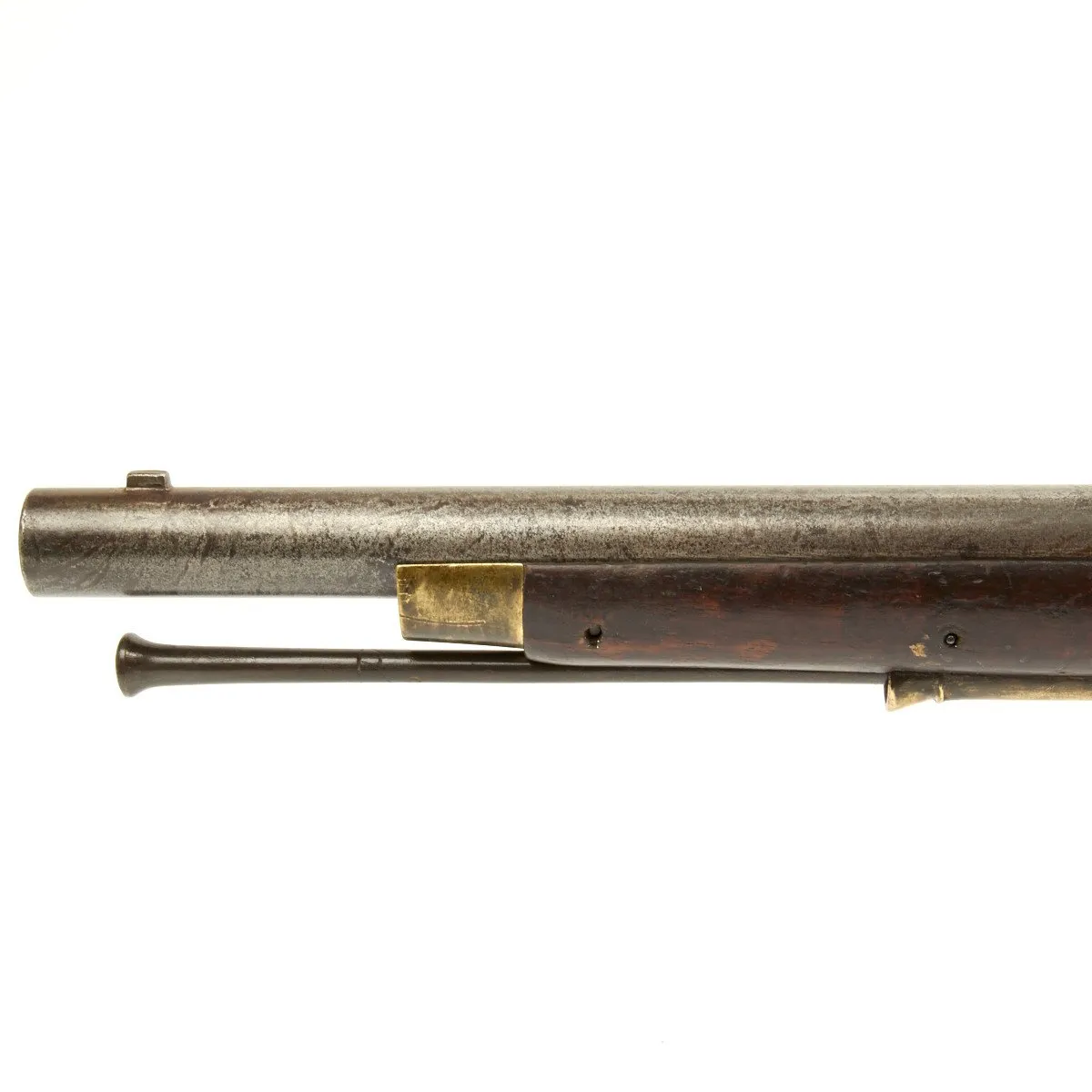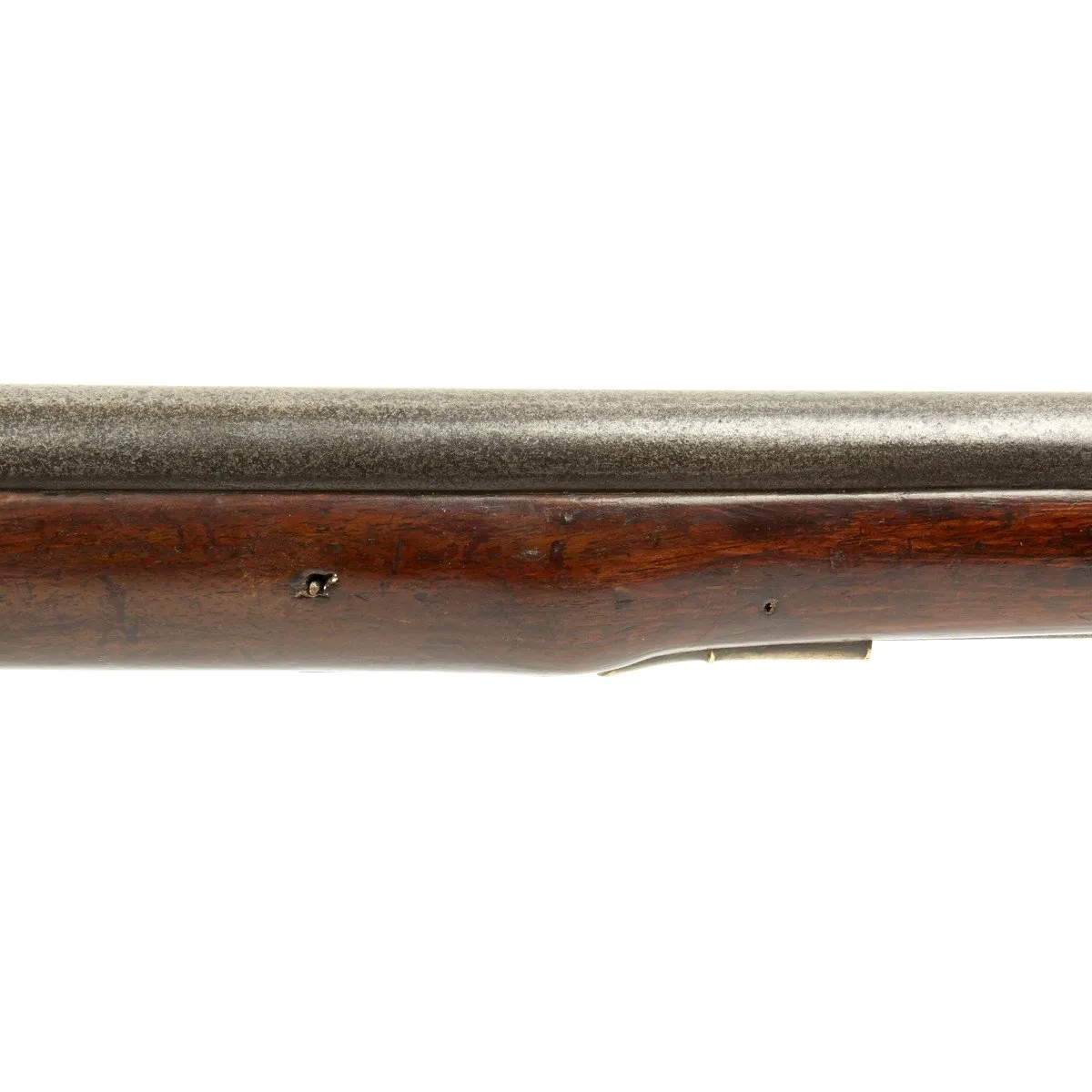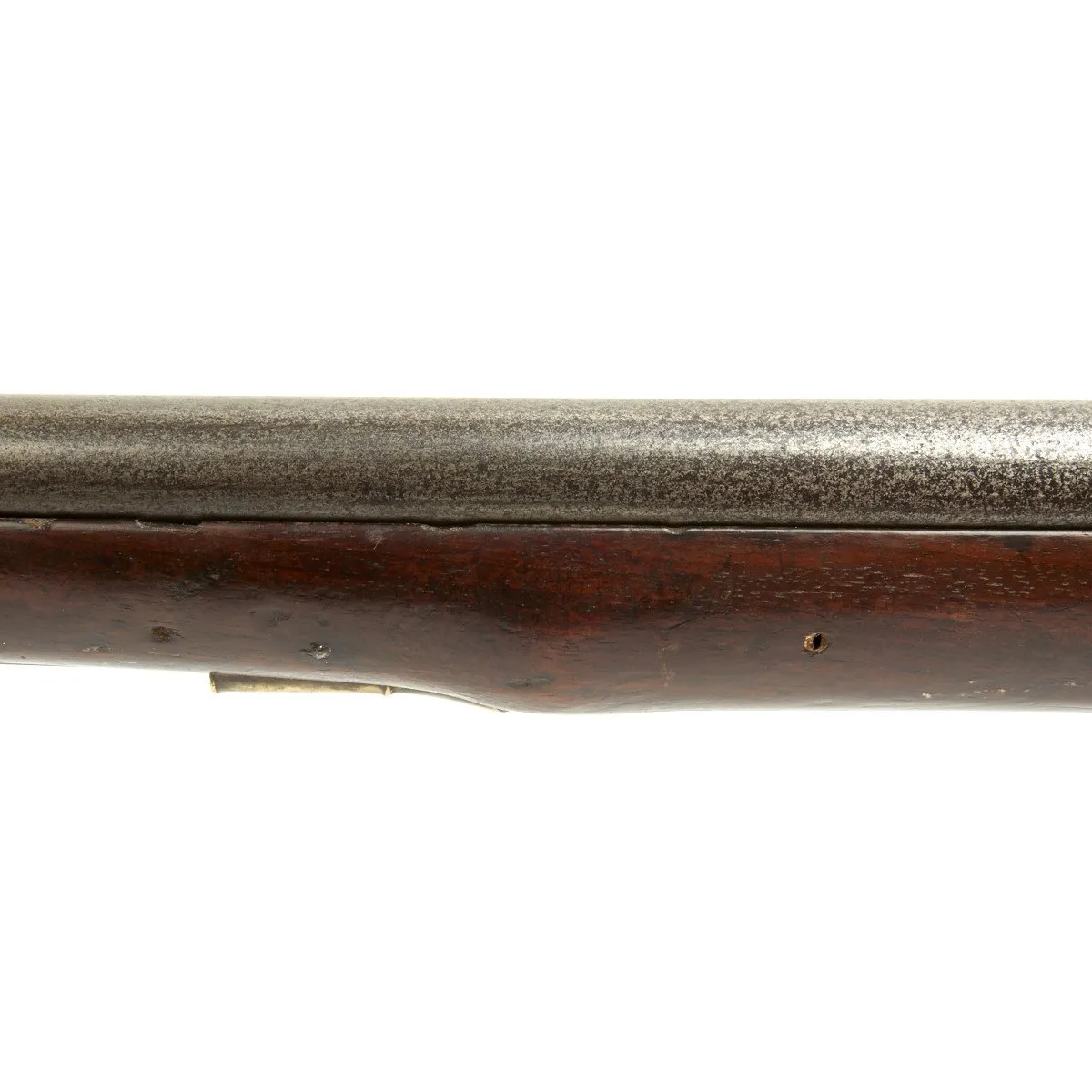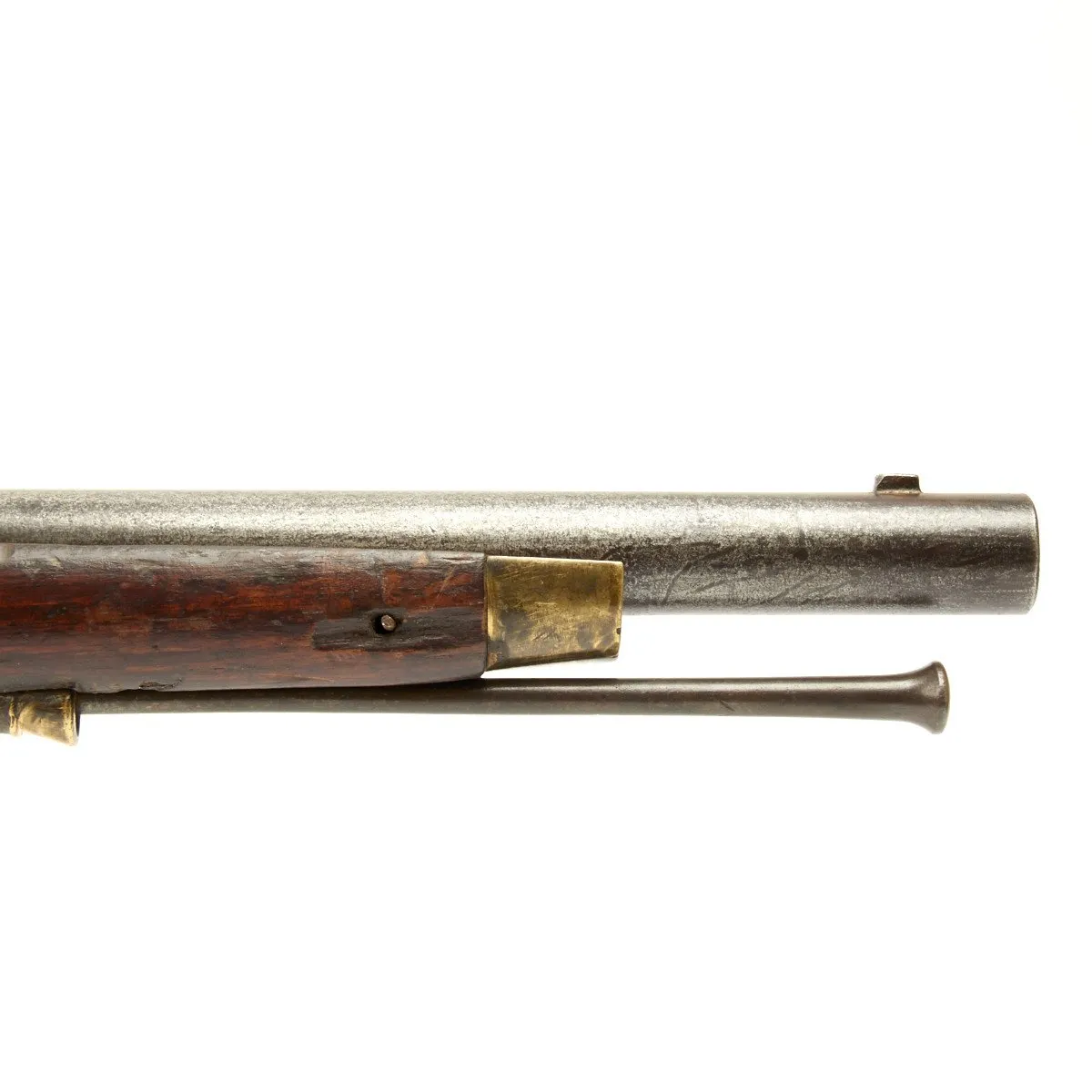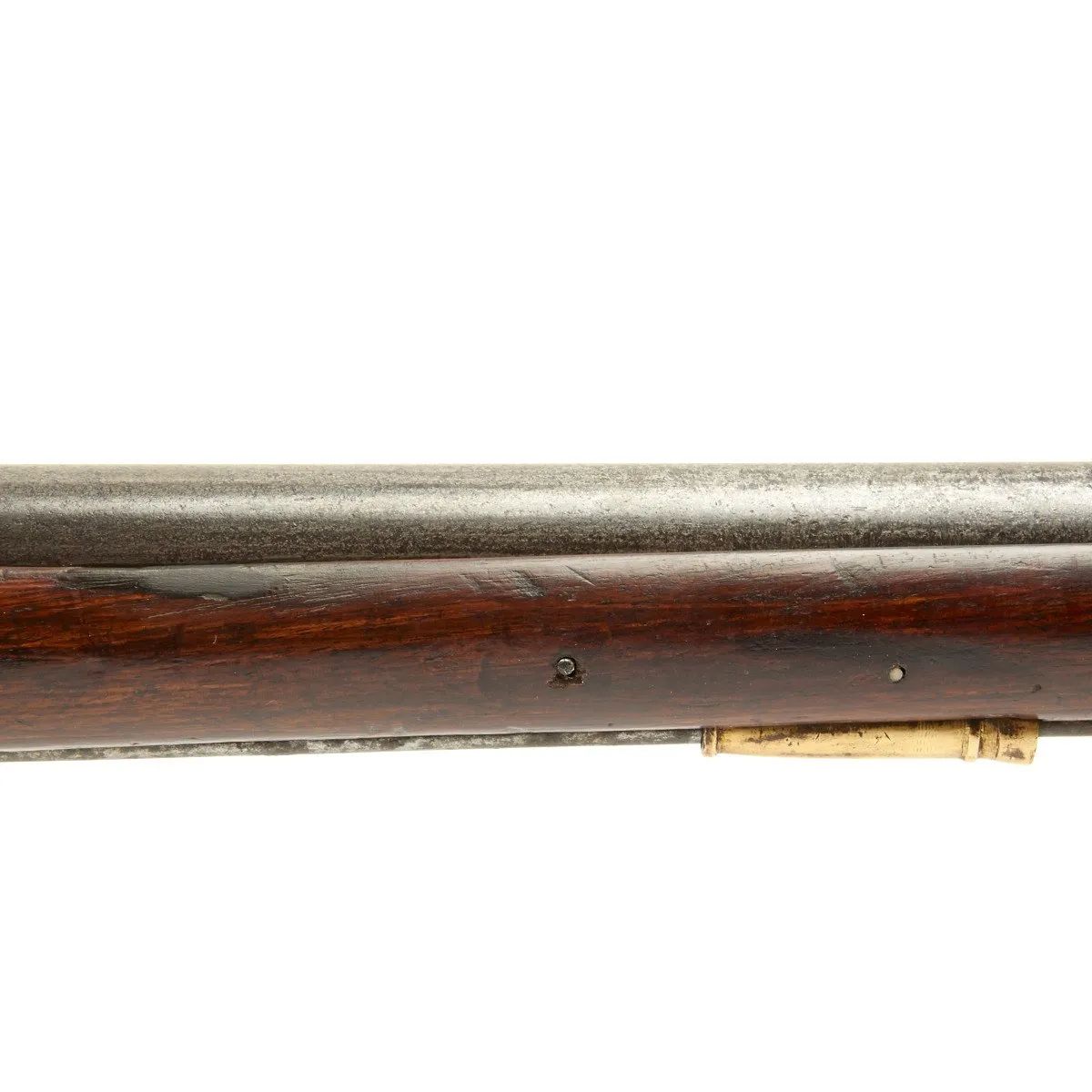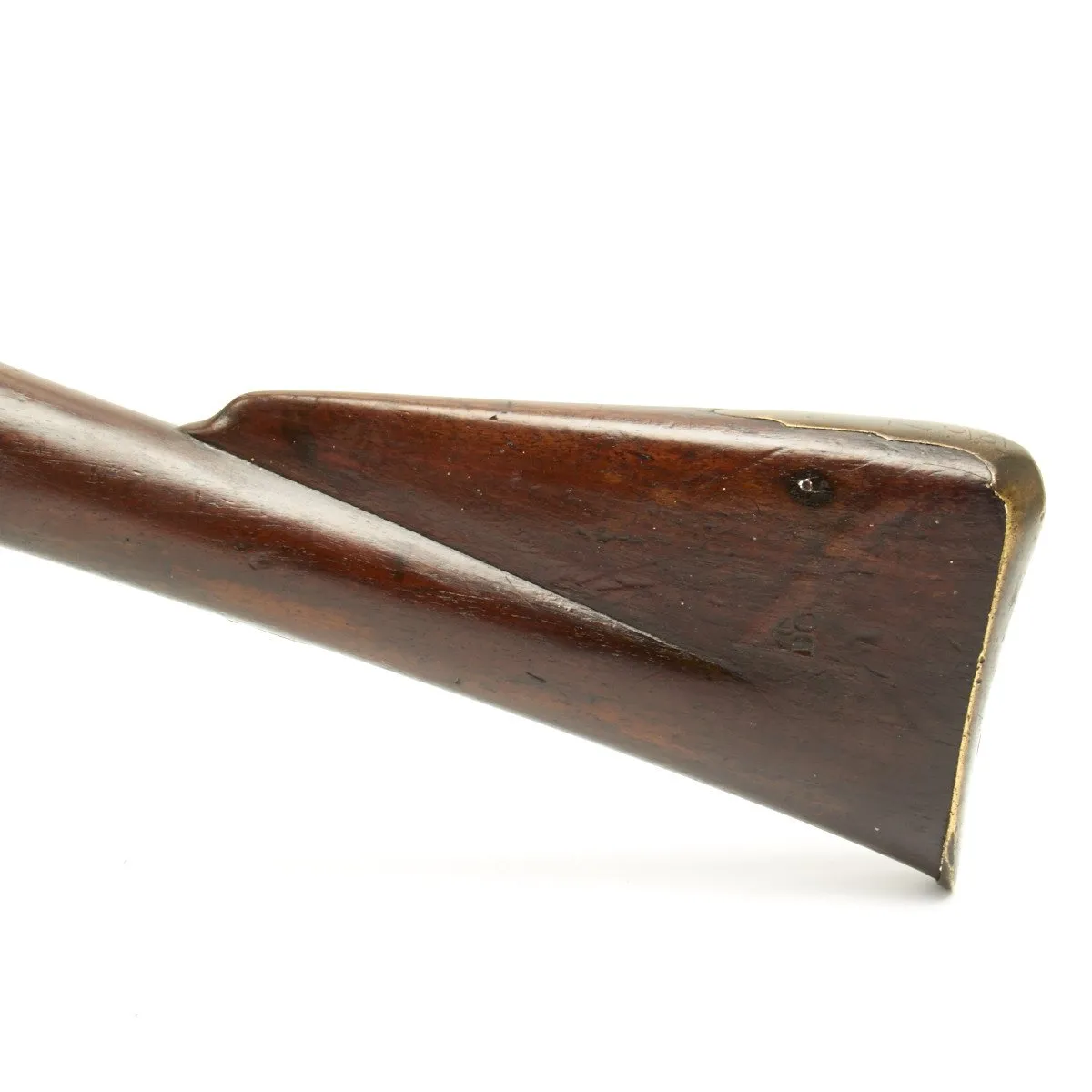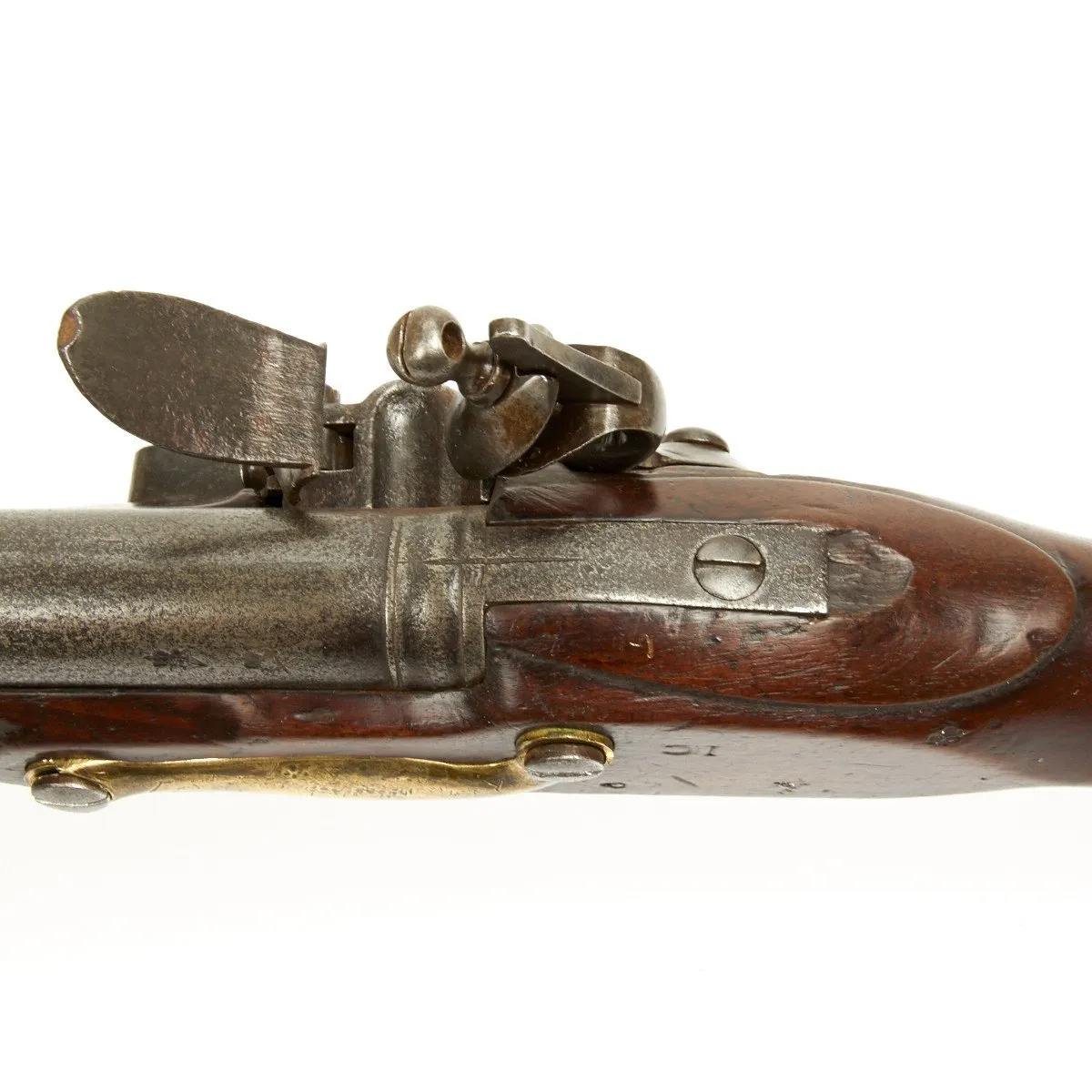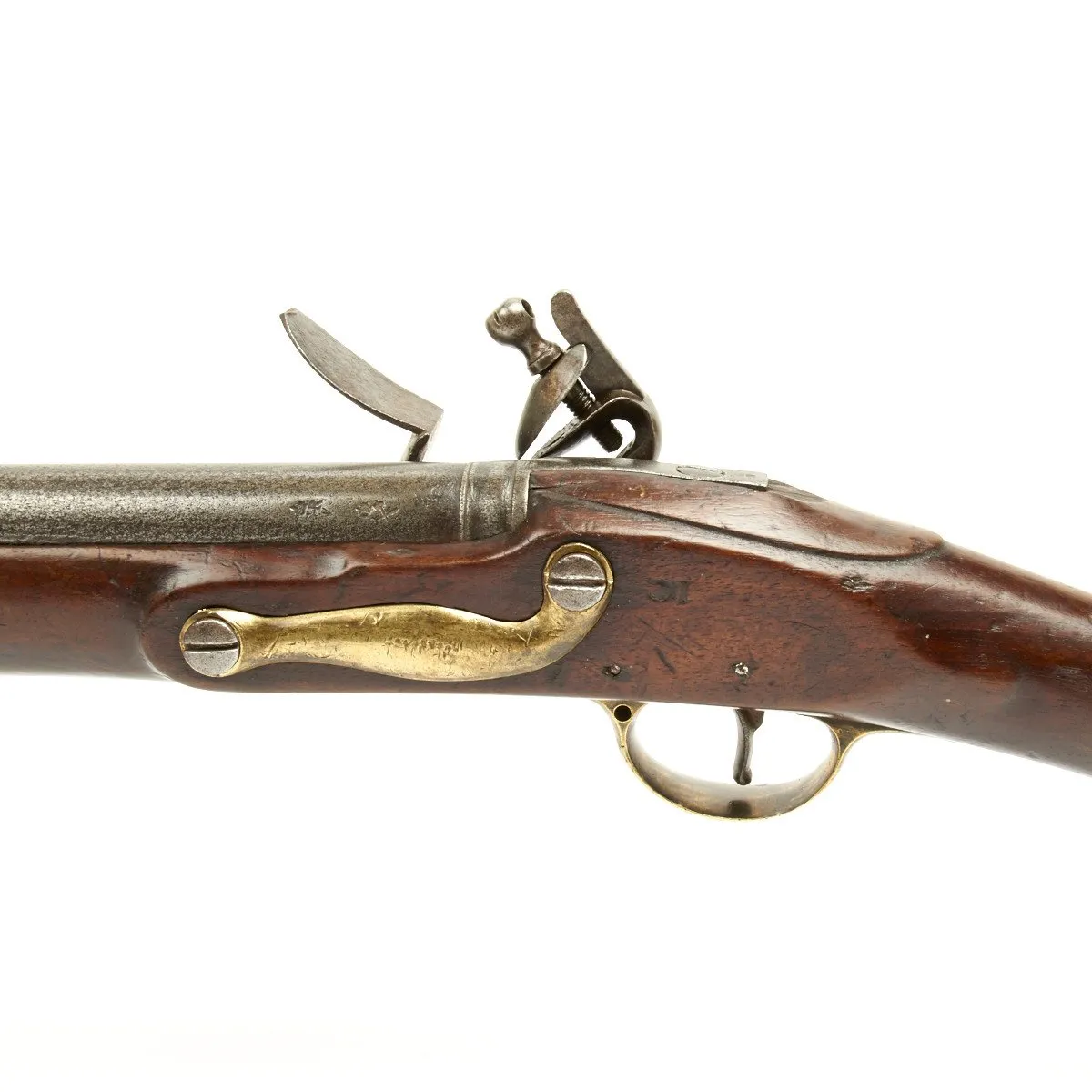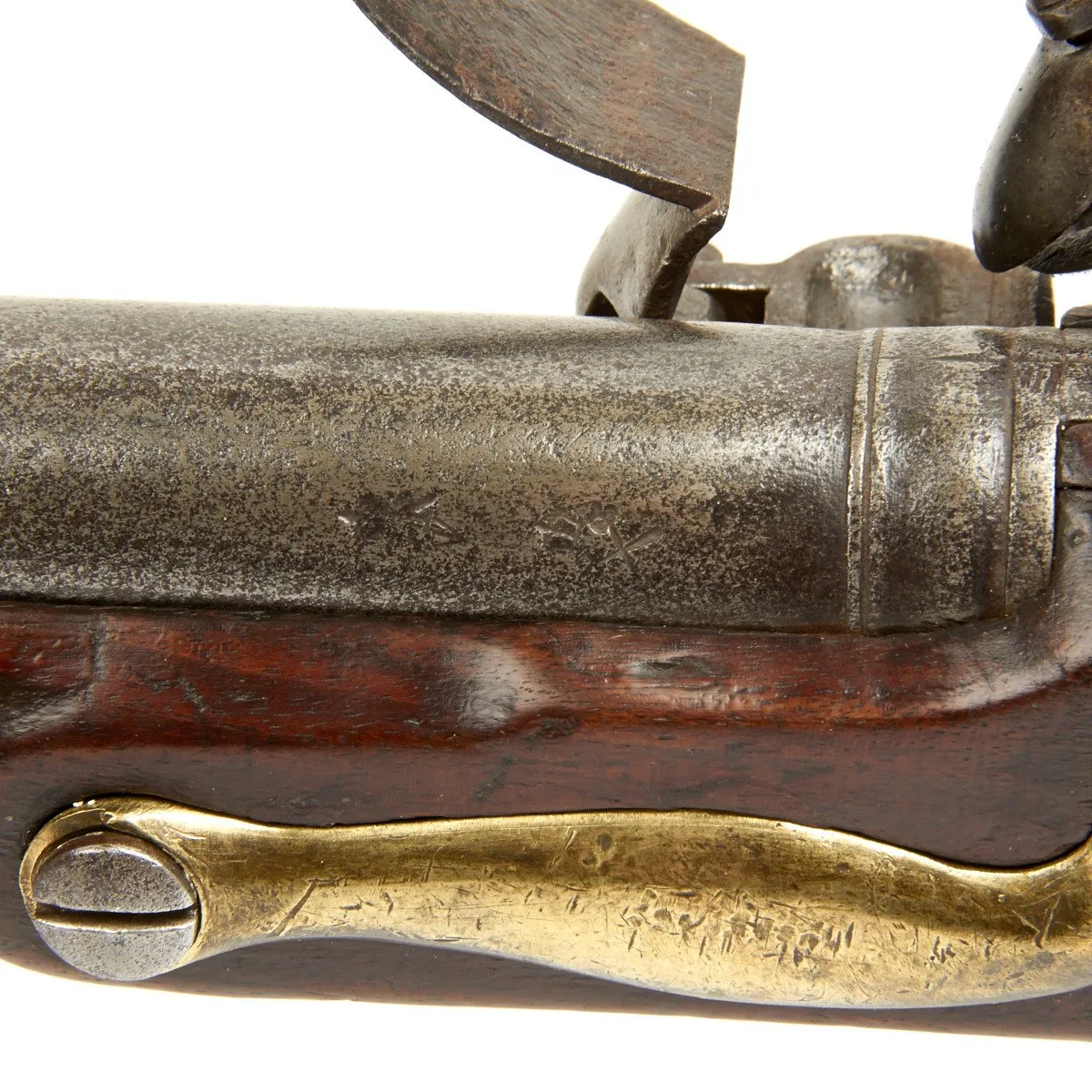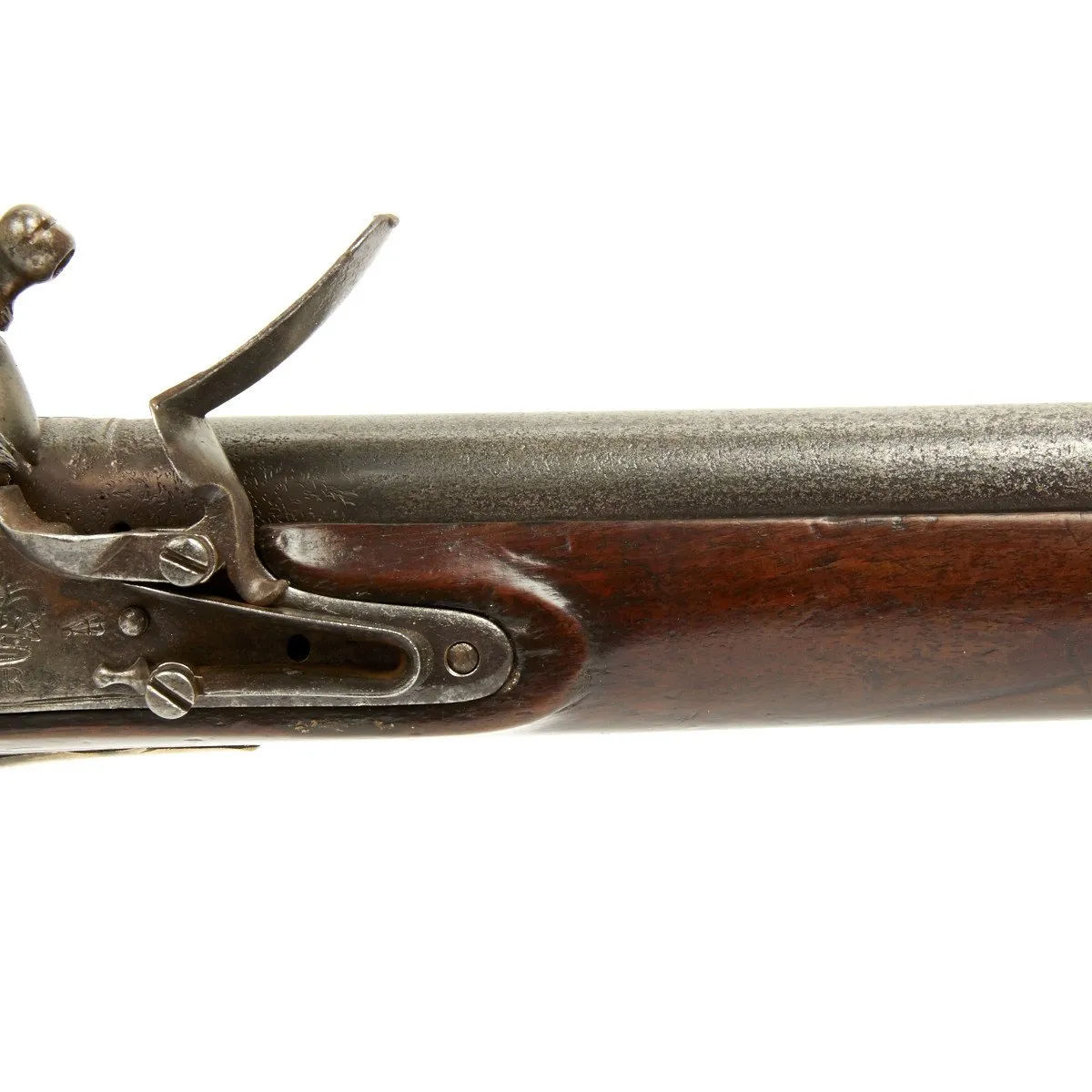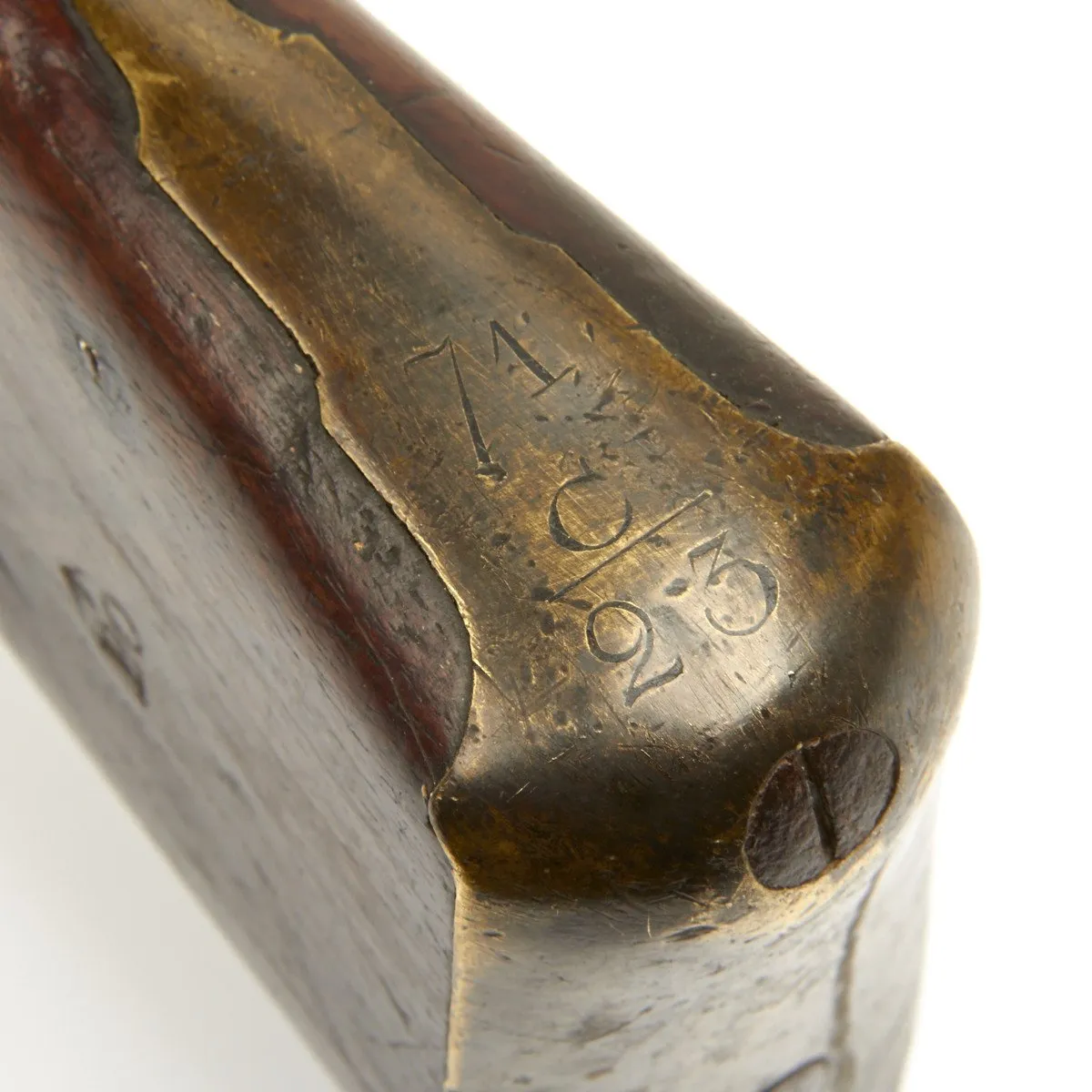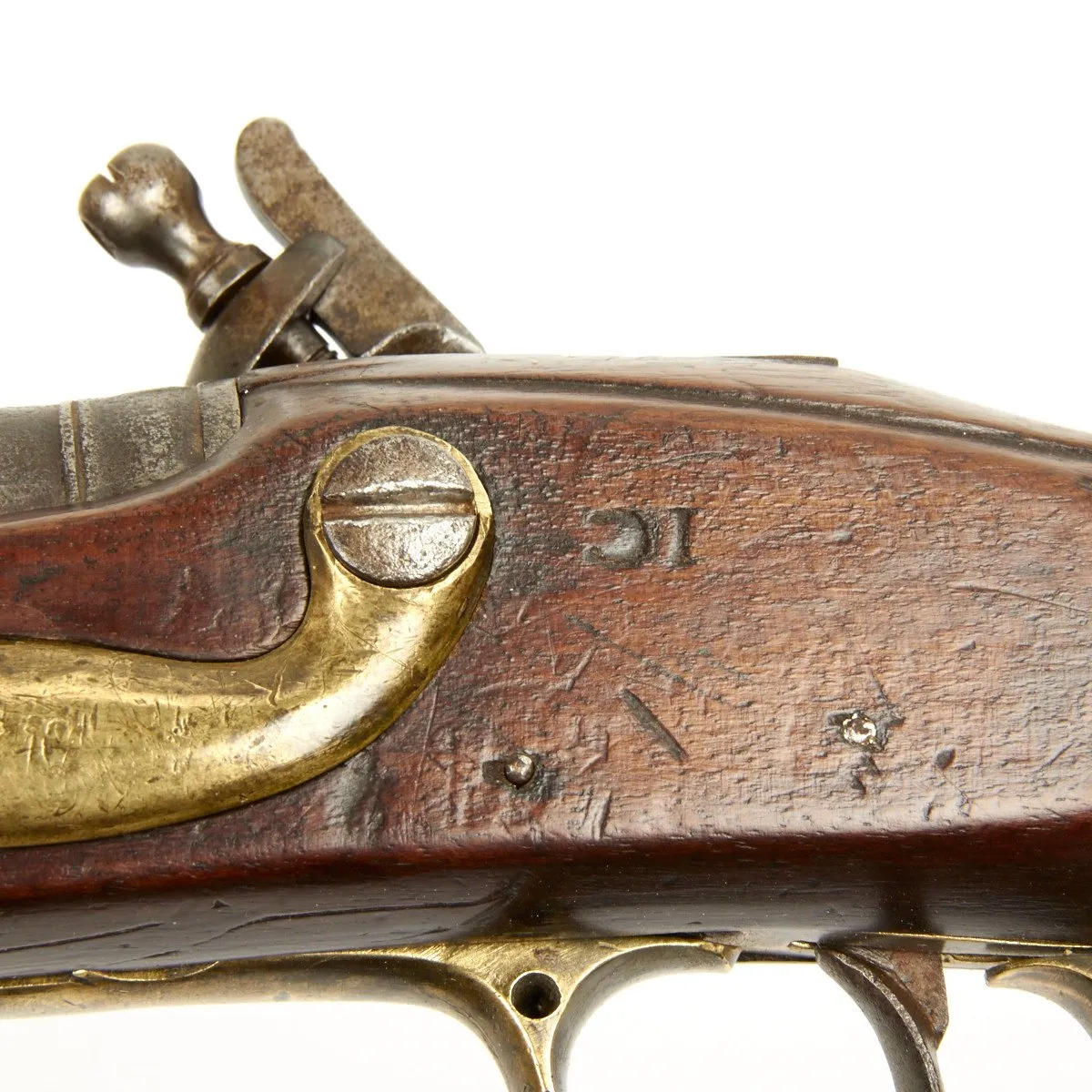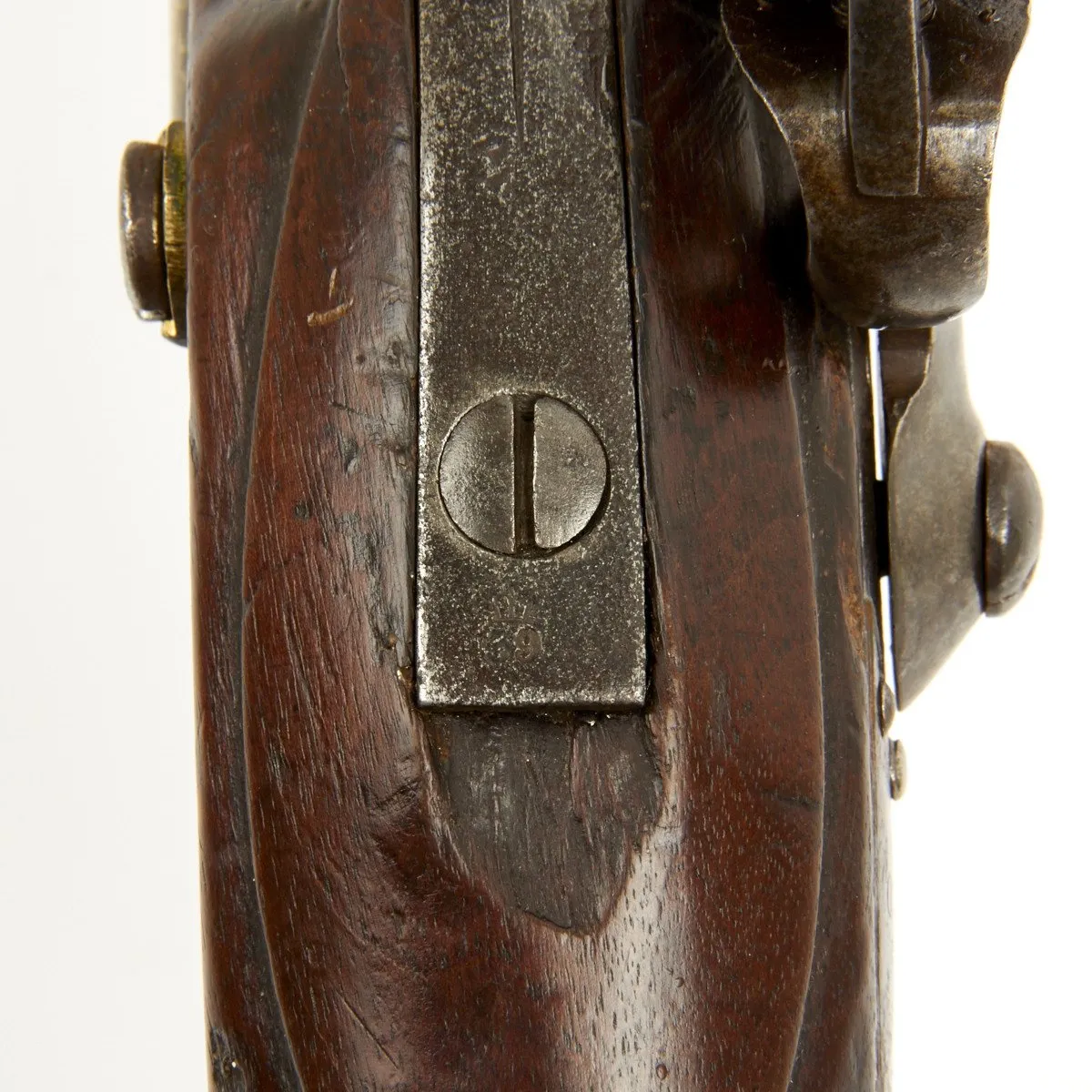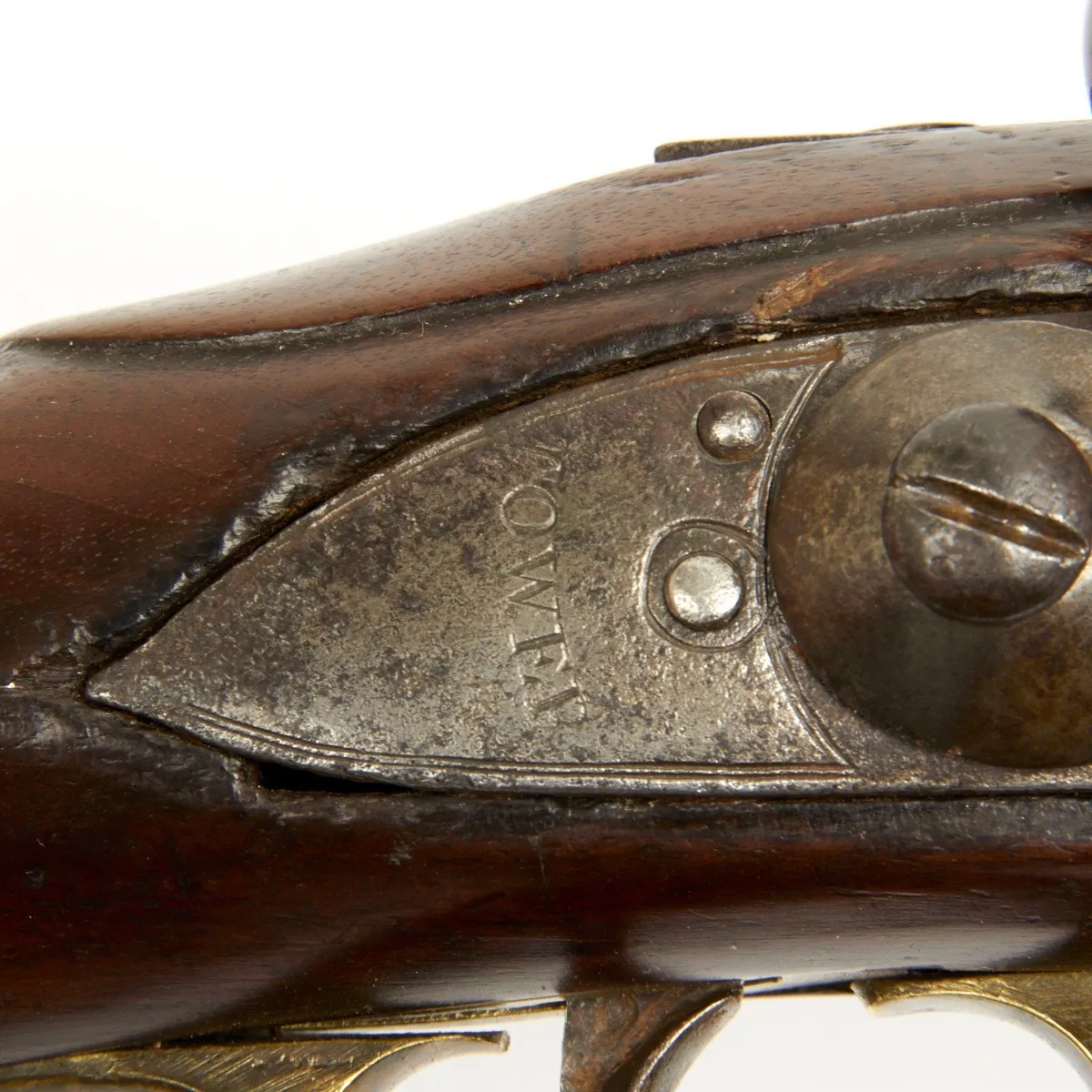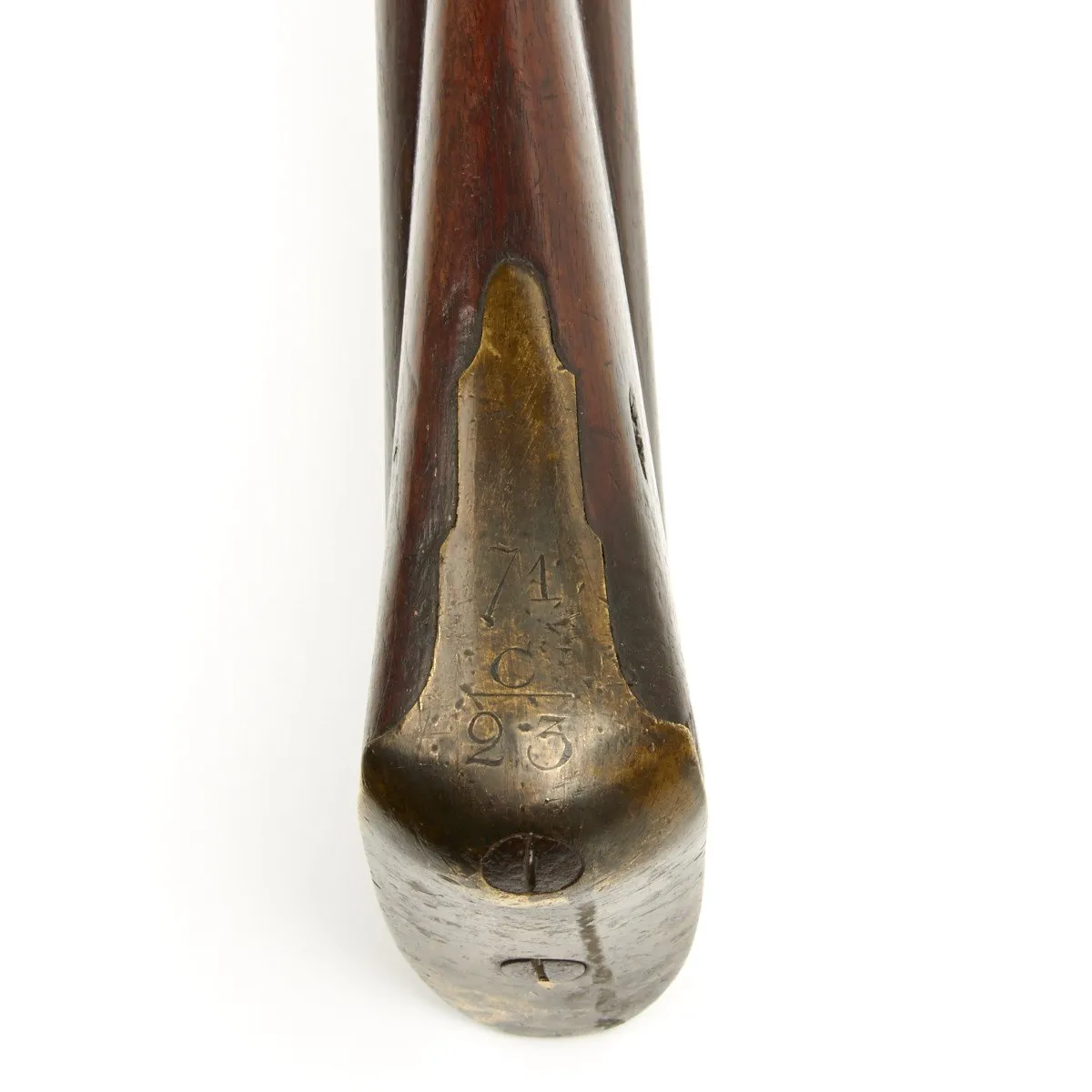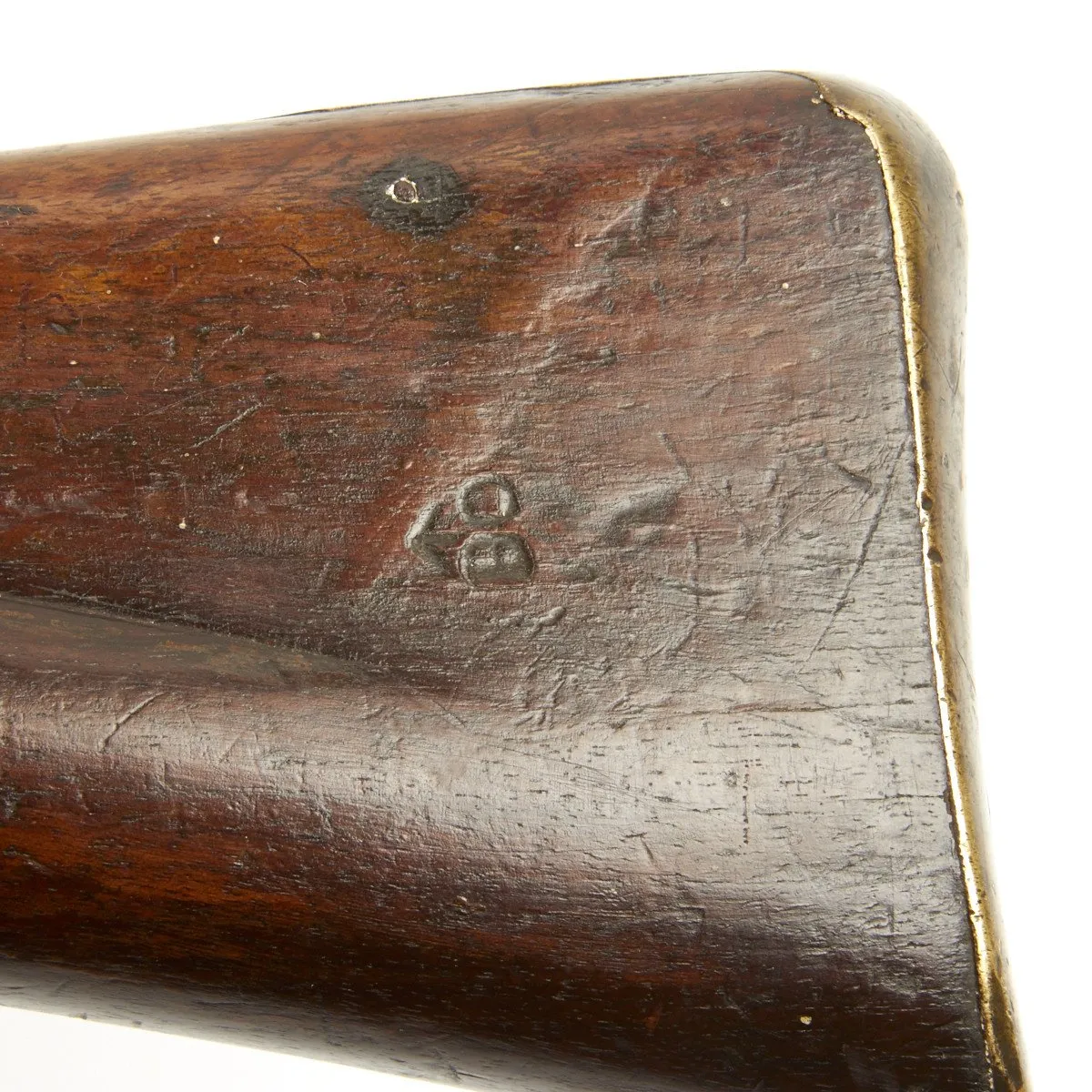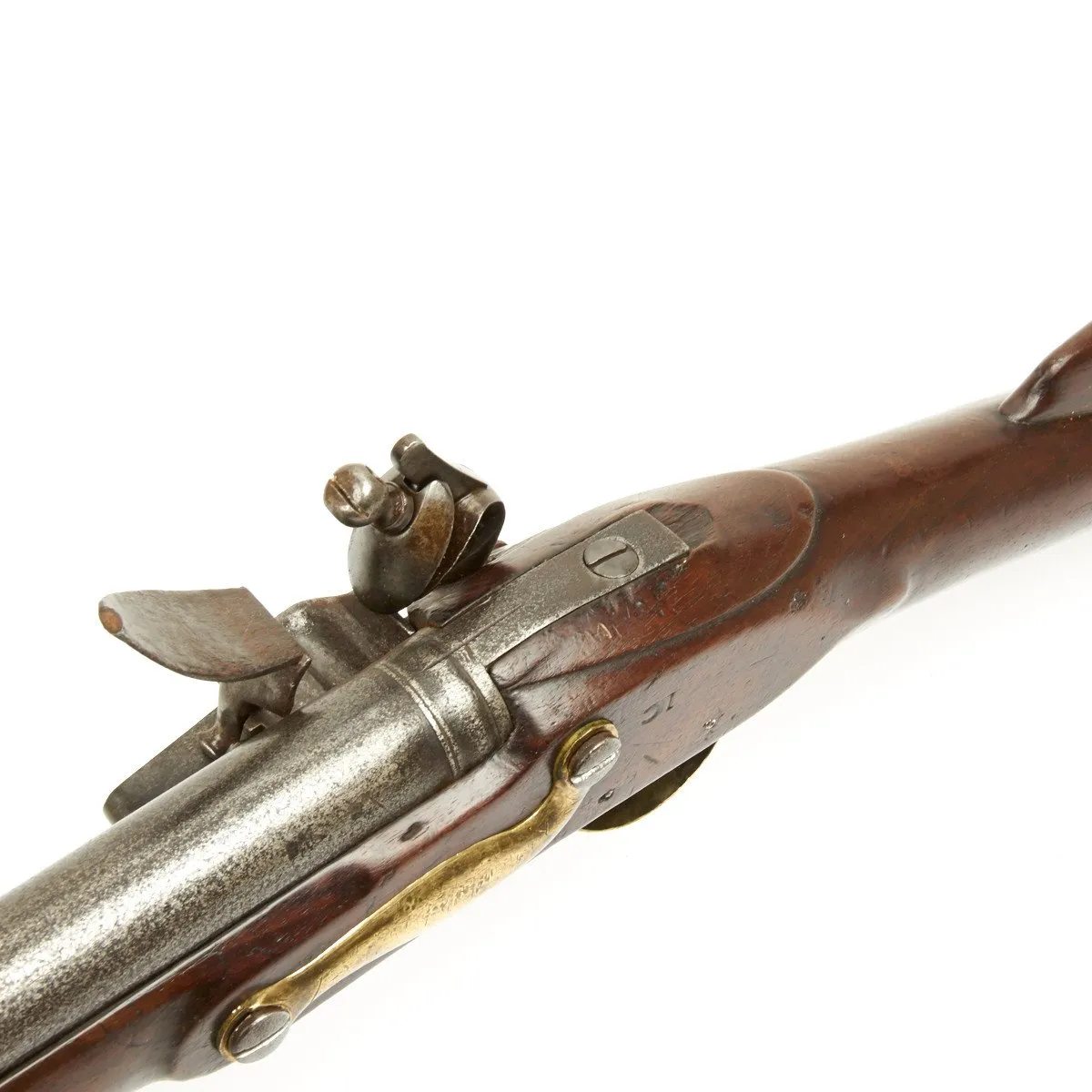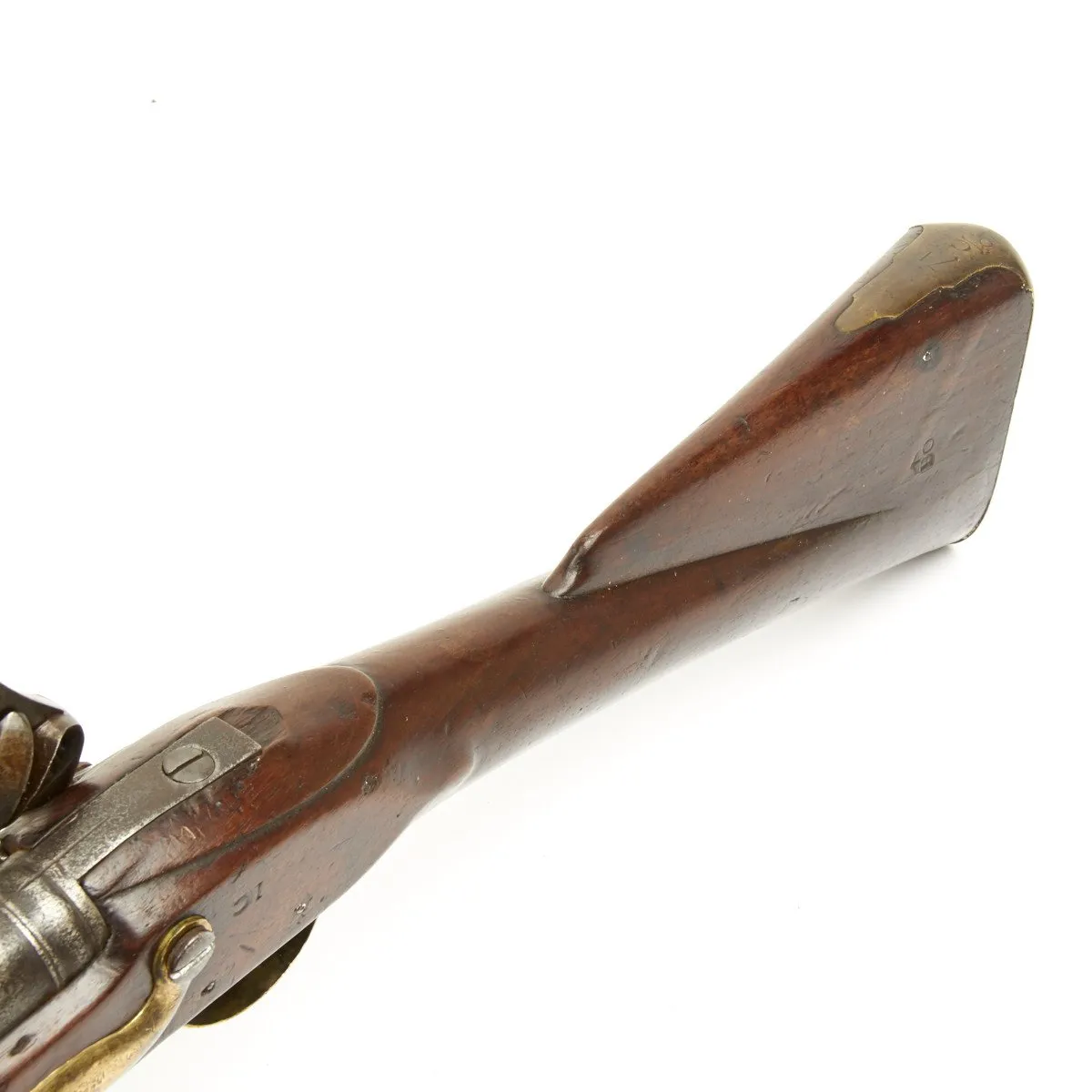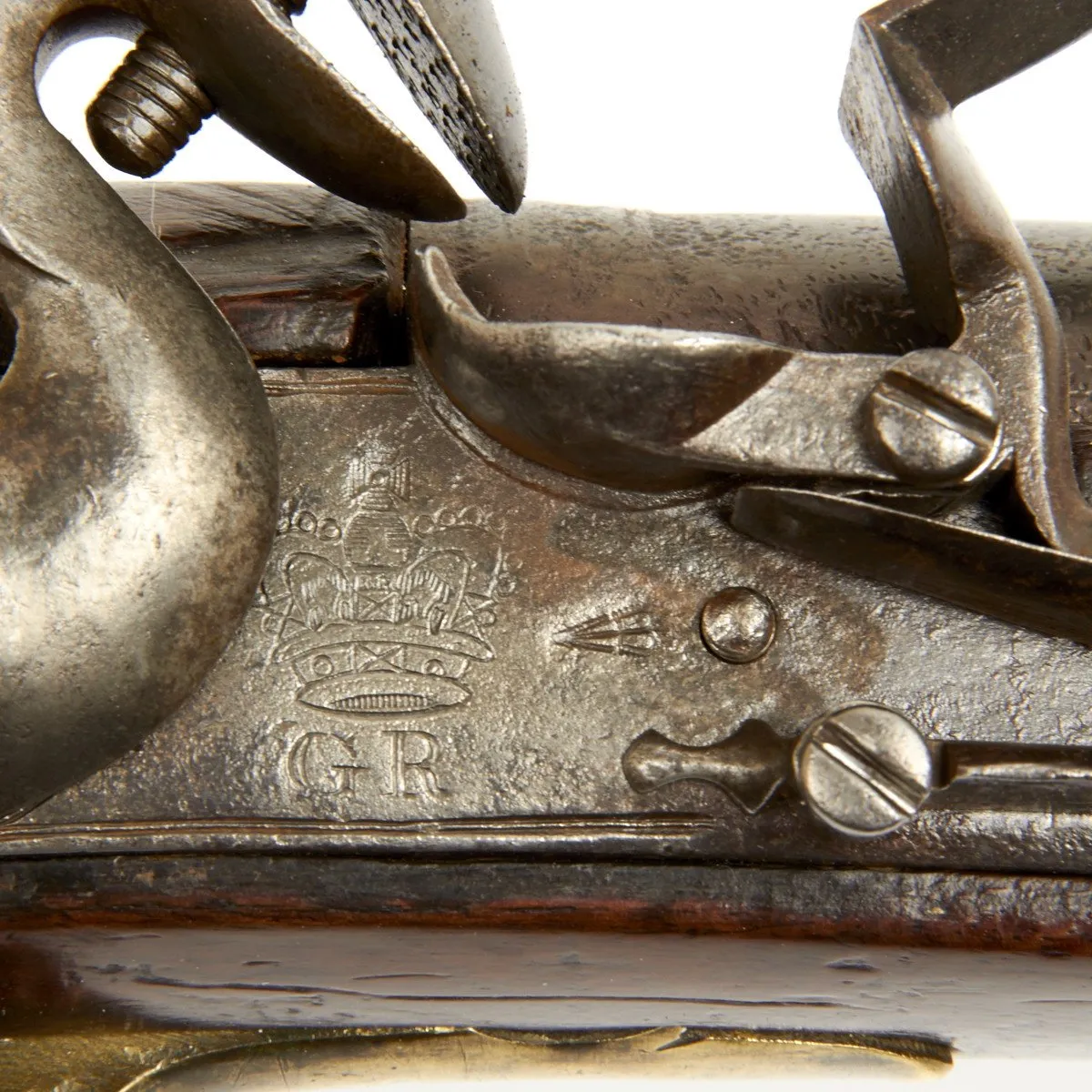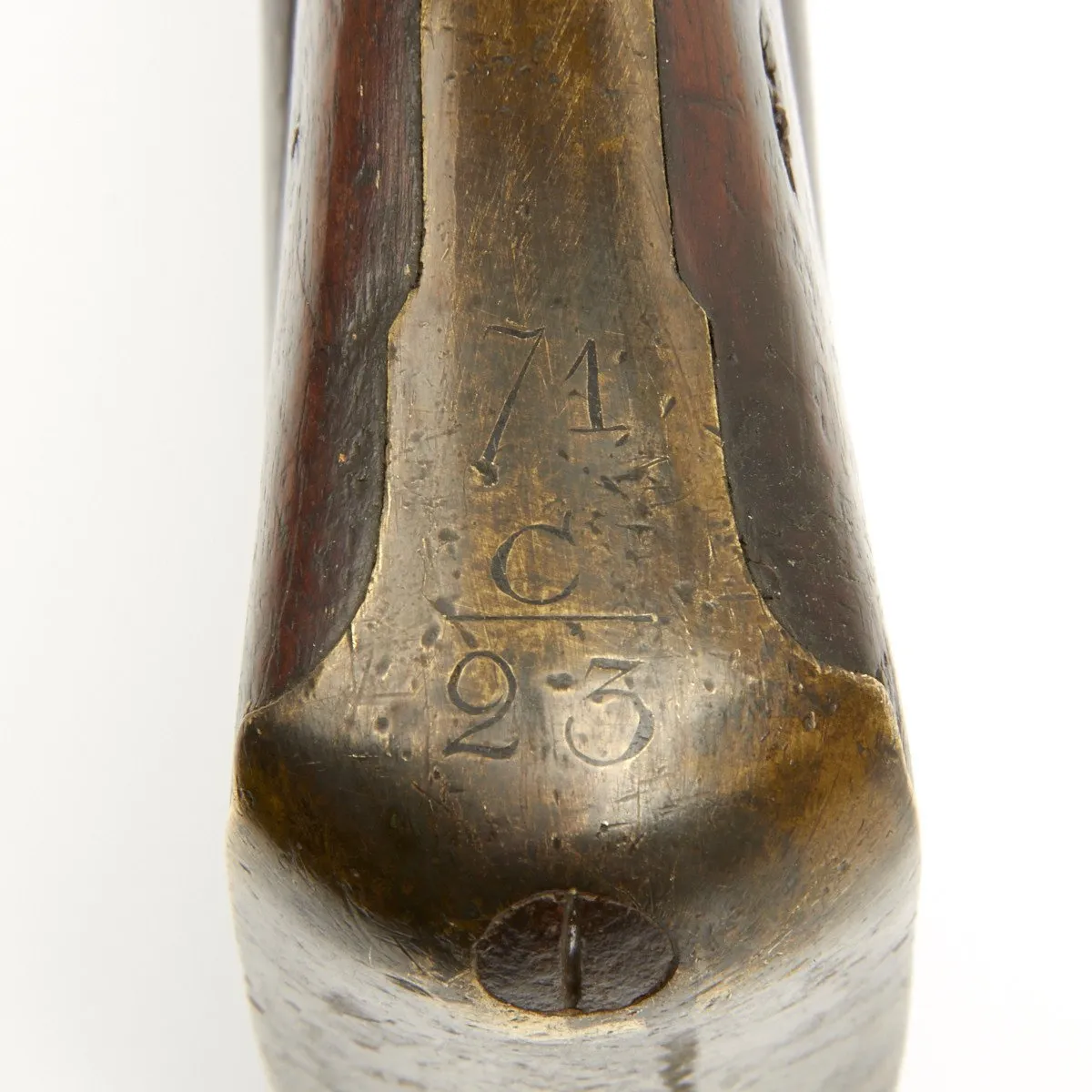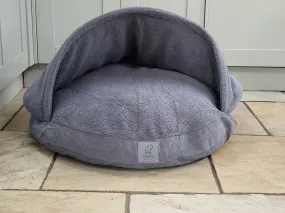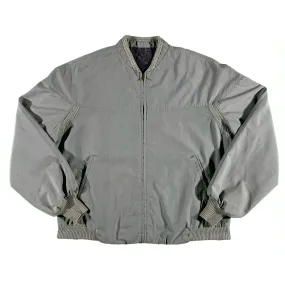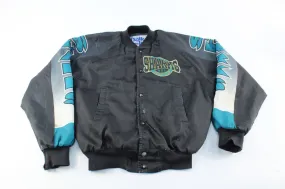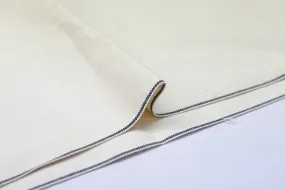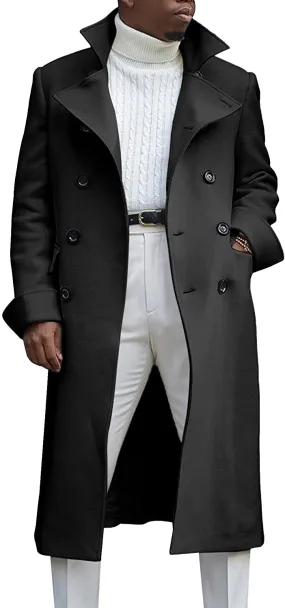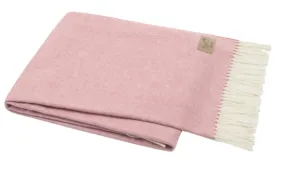Original Item: Only One Available. This is a third pattern or India Pattern Brown Bess 39" barrel adopted in 1796. It was the standard musket of the line during 1815 at the time of the Battle of Waterloo.
This fine musket has a solid walnut stock, all brass mounts and the lock is marked TOWER across the tail with a Crown over G.R.. It comes complete with English proffer barrel and an iron ramrod. The butt stock is stamped with a Broad Arrow and "B.O." for Board of Ordnance. The 39" barrel was slightly shortened to 38" due to muzzle wear from use which was not uncommon and totally correct.
The brass butt plate tang bears the engraving:
C
25
These markings indicate that the musket had been issued to the 71st Regiment of Foot, Company C, 25th man.
History of the 71st Regiment of Foot:
The 71st Regiment of Foot was a Highland regiment in the British Army, which in 1881 became the 1st Battalion, Highland Light Infantry .
The 71st Highlanders fought in India where they fought in the Battle of Pondicherry in 1793 and at Ceylon in 1795. In 1798 after a number of years on active service the effective troops left in the regiment were transferred to the 74th Regiment of Foot and the remainder returned to Scotland by 1802. A 2nd Battalion was formed in 1804. Over the next few years the regiment changed its name a number of times before becoming the 71st (Glasgow Highland Light Infantry) in 1809 and finally 71st (Highland) Regiment of Foot (Light Infantry) . In order to become Light Infantry the regiment changed the way it trained, marched and fought.
1st/71st Highlanders:
The 1st Battalion left Britain for the Cape of Good Hope in 1806 where they were involved in minor actions. In June 1806 they were shipped to South America where they were involved in the disastrous expedition against Buenos Aires by Sir Home Popham. The city was actually captured but later the inhabitants rose against the small British force and took them prisoner. The 1st/71st was one of the battalions captured. Two battalion flags or Regimental Colors were also captured. On the 21st. of April 1808 the regiment received new colors instead of those they had surrendered at Buenos Aires. The colors were presented by General Floyd, a veteran officer.
After reforming the battalion they sailed in 1808 for Portugal where they took part in General Moore's advance into Spain and disastrous retreat out of Spain which ended with Moore's victory at Corunna.
Upon leaving Spain the battalion was sent in 1809 on the Walcheren Campaign. In 1810 the battalion was back in Iberia. They fought all the way through the Peninsular War, in the Battle of Vitoria they were to hold the extreme right of the line and were ambushed at the amphitheatre and massacred by two French regiments, 40 surrendered and around 200 where dead or wounded. Also were at the Battle of Waterloo in 1815 as part of the 3rd Brigade in Maj.General Sir Henry Clinton's 2nd Division. The 1st/71st lost 16 officers and 171 men killed and wounded at Waterloo.
2nd/71st Highlanders:
The 2nd Battalion was raised in 1804 and spent the whole of the Napoleonic War based in Scotland functioning as a training battalion supplying replacement troops to the 1st Battalion. The 2nd/71st was disbanded in 1815.
NOTE: International orders of antique firearms MUST be shipped using UPS WW Services (courier). USPS Priority Mail international will not accept these.

